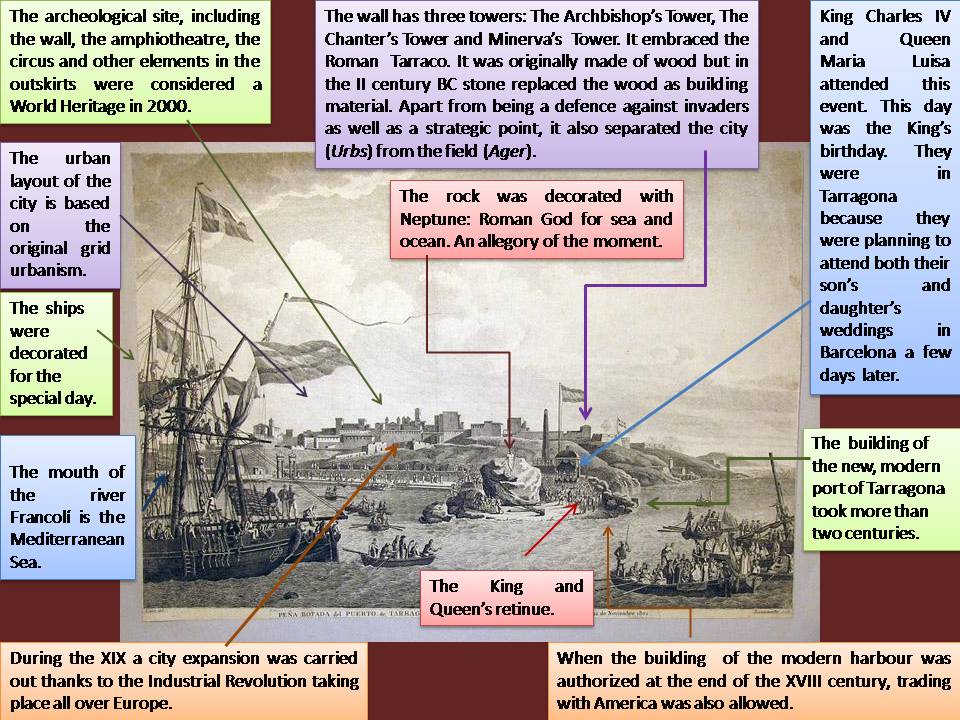TARRAGONA (Laborde, 1806)
This work of art is an etched engraving that portrays the Sinking of a rock in the port of Tarragona, in presence of T.C.M. on the 12th November 1802 (full name of the picture). It is included in «Voyage Pittoresque et Historique de L´Espagne» (París 1806) by Alexandre de Laborde (1773-1842). Actually, Ligier drew the picture and Dequevauviller was the engraver. This work is a version of Antonio Rodríguez and José Vázquez’s work in 1805. Laborde was a French liberal politician and writer. Furthermore, he was made count by Napoleon during his Empire, and after that, Laborde’s father made him Marquis de Laborde during the Bourbon Restoration. This work, whose first volume deals with Catalonia, had a first edition in Spanish published in Madrid by the Royal Printing House in 1806. Besides, it was a limited edition and disappeared very soon. It portrays Tarragona’s port and the sinking of a rock that was going to be thrown into the sea.
The ancient city of Tarraco, lies on a promontory, facing the Mediterranean Sea, next to the mouth of river Francolí. The fact that it is situated on the Mediterranean seashore makes it even more important because in the beginning, it is believed that the Scipios founded the city, and after them Tarraco was established by the Romans in the II century b C. In fact, it was the first Roman military foundation outside the Italic Peninsula. Thanks to it, the access to the rest of what is now called Spain was easier at that time. The orography of Tarragona’s land and the presence of a natural cliff influenced its morphology from the very beginning. It was a good place to defend and a bad one to attack.
The picture shows the construction of the modern port of Tarragona. The project had started quite a few years ago but it lasted for more than two hundred years. Towards the end of the XIX century, building outside the wall was allowed, so the city grew bigger. At the time of the picture, Tarragona was an ecclesiastical and military centre negatively influenced by the Segadors and Succession Wars. The main groups in the city were nobility and clergy, whereas the bourgeoisie was marginalized.
We can divide Tarragona into three parts, each one with a different morphology; that is to say, the ancient part or historic centre is regular, inherited from the Roman grid urbanism. The Imperial Tarraco square, which is radiocentric, and the city expansion, consists of a regular plan. We can see that a lot of people attended the throwing of the rock, including King Charles IV and María Luisa of Parma. The rock throwing was a representation of all the work that was being done in the port.
It is important to take into account that Tarragona played a very important role from the time of its origins as a Roman foundation, because of the first settlements in Spain by the sea. Furthermore we also have to remember that now is considered a World Heritage since 2000 thanks to the archeological site. That is why although going through many conflicts and wars; today we can still appreciate all its beauty and magnificence.
Deli Moltó Navarro

